Search the Community
Showing results for tags 'IDF'.
-
Hey, looking at the rapidly growing built models clogging up my bookcase shelves, I thought to myself " I haven't got a proper APC, yes I have the Namer (big) and the Nagmachon (So many metal bars!) but not the legend that is the M113. So Jadlam it was, and with express next day delivery selected I was hoping to have it in my hands before the weekend, alas it's somewhere between Bristol and the North East and the Royal Mail tracking is useless. So here's the box art from their website. Hopefully it turns up tomorrow or at least before the weekend (first child free one since lockdown), I'm curious to see what it's like as Scalemates doesn't have much on and the instructions are for a different version, the figures will be a first for me. Will be right out of the box, no eduard etch sets for me (that's money I can use on the Merkava 4) and I should have enough of the AK paint left otherwise it's a trip to the Folks/Brother for a bit of light robbery. Hopefully an update soon.
-
After reading Steven Pressfield's book "The Lion's Gate: On the Front Lines of the Six Day War" I was excited about the idea of reproducing this photo in a diorama: It is a Super Sherman firing at the Lion's Gate during the Battle of Jerusalem in the Six Day War. I couldn't find any more information about the markings for this tank. On tanks-encyclopedia.com it says it is an M-50 Degem bet based on an M4A1 hull. Also the lateral cartridge ejection hatch is open and the commander’s cupola is of ‘round’ type. I can identify the HVVS suspension and the markings of a W inside a square, on the right fender. I came here to ask for help from my colleagues, who have great knowledge of the subject. Thank you in advance for any assistance. Greetings from Brazil!
- 15 replies
-
- Israel
- Six-Day War
-
(and 1 more)
Tagged with:
-
Evening everyone, well it's a Saturday night so it must be time to finish another one. This is the Meng 1.35 Merkava Mk.3d Late LIC. Having just done the Namer I quite fancied another Meng kit, and since I've already got the paints, the Merkava was an obvious one. The quality of the kit is excellent, the relief of the moulded ball and chain (unlike HobbyBoss' that will die on the shelf of doom) was quickly tempered by the lack of anti slip texture on the hull. This I thought was an odd omission since the Namer had it and the gorgeous photo album included in the kit shows just how noticeable it is. I didn't quite like the idea of building it without so I had a quick look around and found VMS' hull texture. It's pretty simple to use it's just like those awful kids glitter pictures you have to put on the fridge (6 weeks maximum). It's by no means perfect but I'm quite chuffed with how this has turned out. Unfortunately it did get dropped at one point so the aerial mounts on the hull are somewhere in a hoover bag now. All Brush painted with AK Acrylic IDF Modern Grey, AK's Nato black (a first for me using Lacquer) and weathered with the Tamiya Sand and Flat earth stick (which thanks to the texture really wasn't easy. Thanks for looking.
-
Anybody know what the boxes either side of the drivers hatch are? They seem to be electrical, with possibly wires going in/out (where from/to?) They are on the turret as well, fore/aft of the loaders hatch Your help would be appreciated. @Das Abteilung
-
Hi All, Here is another bird completed this year. In fact I finished this one back in August but have not made a photosession until yesterday. So here it is - Fouga Magister in IDF demonstration team colours: Not much to say about the prototype as its history is pretty well-known. A training aircraft that flew with numerous air forces for many-many years as a basic trainer. In IDF though it made quite a career serving not only as a trainer but also as an attack aircraft and a demonstration team airplane and was further upgraded to Tzukit standard with updated avionics, engines, etc. The kit used is a newly released Special Hobby option. Overall a nice kit with impressive level of details in cockpit, undercarriage bays, full engine details are also provided. Fit is good but tight at times. Pay attention to cockpit as after closing the fuselage you may find out that the canopy is too narrow. Cockpit interior needs to be carefully trimmed to make sure it does not stretch fuselage sides. Also I would advise to start canopy attachment with front and rear sections, then install two-part middle section and finish with opening sections which you may trim as appropriate if they do not fit. More construction details are available at the WIP thread. Very minimal aftermarket sets were used - resin wheels from CMK (although kit wheels are not at all bad either), seat belts from spares and that is it. And I do not think I made any substantial improvements either as the kit looks very convincing out of the box. The kit I had was for exotic African Air Forces but my intention was always to make an Israeli machine, so an Isradecal set for Fouga Magisters was bought. That one unfortunately was a disappointment almost ruining the whole project... Large white decal stripes turned out extremely brittle. While I was able to deal with them on flat surfaces, on curved area around V-tails that broke apart and in fact did not fit the area well too. Particularly poor result is on port side where I had to overpaint cracks with white paint and still not super satisfied with outcome. Paints used are Hobby Colour blue H328 (FS15050) well diluted with white - I tried to be as close to the blue colour of Stars of David, obviously black, white and silver from Vallejo and lastly H318 tan for undercarriage interiors. I was matching this to the photoes of real French Magisters and that seemed to be the closest match. Final finish with Gloss Tamiya clear. Now there are couple more shots "with others". My full IDF collection firstly: And all the bright jet trainers secondly: Hope you like it Kind regards, Dennis
-
Hello this is my current build! An AFV 1/48 F-CK-1C Ching-Kuo Indigenous Defence Fighter. I decided to build this one in flight Here is the current status: Here are some of my previous in-flight-aircraft works, from which I have earned some experience depicting aircraft in-flight-modeling with landing gear down 1) Boeing F/A-18F, VX-23 Salty Dogs, Hasegawa 07450, 1/48 2) Boeing EF-18AM, Ala 15, Ejercito del Aire. Kinetic Models 1/48 3) Grumman F-14D Super Tomcat, VF-213 Operation Enduring Freedom, AMK 1/48 4) Grumman F-14D Super Tomcat, VF-2 Bounty Hunters, Operation Iraqi Freedom, Tamiya 1/48 5) Mikoyan MiG-31BS, Blue 16m VVS Russia, AMK 1/48
- 36 replies
-
- 11
-

-
Hi everyone, Here is one more project I completed back in 2020 somewhere mid-year but it took me a while to post an RFI report here. This time this is Kinetic's F-16I Sufa naturally in IDF colours: I do have a lot of interest in IDF aircraft due to their operational history but more importantly because the Israeli were always trying to sqeeze maximum of the assets they were obtaining which resulted in aircrafts' versions with the ultimate characteristics. F-16I modification of the famous Viper is a perfect example of that approach. Construction was not very complex. The mainframe structure has just two parts - full upper fuselage from radome to airbrakes that is molded together with wings and lower fuselage. However then you get a lot of parts to create a standard Viper - multi-part intake, main gear bay, rudder and stabilisers, cockpit tub, etc, as well as some Sufa specific parts such as ventral spine, conformal tanks, various antennae, pylons and so on. Fit was good to great although frontal engine section that creates intake with front gear bay requires dry-fitting. The nastiest part being intake to lower fuselage joint where you would probably need to make a thin plastic insert to close the gap between the two subassemblies. Another area to watch out is the internal intake side. Intake is made of five parts which creates joints where real aircraft has the smooth curved surface. At the same time the intake is very deep and needs to be painted somehow if assembled and sanded unpainted. So I chose to paint parts prior to assembly and sacrifice smooth surface in favour of better and easier paintjob. I did apply some aftermarket parts including Eduard cockpit PE set and Aires resin exhaust. Original exhaust is quite simplistic so the model definitely benefits from the resin option. Lastly Master pitot and angle of attack probes were used. Kit decals are applied. They are Cartograph printed so are of exquisite quality and include abundant quantity of technical stencils. Weapons are all coming from the aircraft set which contains a great range of IDF armament including Python 4 AAMs, Rafael Spice guided bombs, Delilah and Popeye cruise missiles, as well as a range of navigation and targeting pods all with a set of decals. The only thing that the kit unfortunately lacks is the standard F-16 centerline fuel tank. I hanged the AN/AXQ-14 targeting pod instead of the centerline tank although I'm still not fully sure if that pod is needed with weapon combination that I've chosen. Paints used are Hobby Color H310, H312, H313 for top surface, vallejo 70.990 for the lower side and lightened H305 for the radome and other unpainted plastic covers. The green H312 needs attention as it matches to the green colour used by IDF in the post Six-Day war period but not to the contemporary green. To bring H312 to the lighter modern green tone you need to mix it with white at about 1:1 proportion. As you can see the Kinteic kit converts to a very nice model with a lot of details and very well representing this interesting Viper variant. However the worst thing about the kit is the kit's instruction... The manufacturer decided that the true modeller should be working with references that is why: - no decal guide for weaponry is provided - no paint guide for weaponry is given either - some mainframe parts are not indicated on the assembly steps while some are indicated wrongly - paint references are sporadic - the black and white colour profiles do not show demarcation line between the green and tan areas - not all stencils are indicated on the stencil placement guide ...so you need to work with walkarounds A LOT!!! This superarmed beast took quite a bit of my time on and off during more than a year. But glad it turned out nicely and I must say it looks really cool on the shelf with its bright colours and serious armament under the wings. Hope you like it too Kind regards, Dennis
- 10 replies
-
- 25
-

-
Hi all, Today I'm posting the last one of my Spitfires trio. This time I've got a little non-typical one - this is a clipped-wing mk.IX in Israeli markings. The War of Independence (or the 1948 Arab-Israeli War) was the last conflict where Spitfires saw air-to-air dog-fighting - most paradoxically a lot of this action has been happening between Spitfires flying in RAF, Egyptian Air Force and newly formed Israeli Defence Force. The prototype that I've chosen was one of the aircraft flown under Velveta I operation from Czechoslovakia in late 1948 that arrived to Middle East in time to see some action in the last months of the conflict in December 1948 - January 1949. The aircraft belonged to the 101st "The FIrst Fighter Squadron". At the time of the conflict Spitfires were still retaining their factory colours of Dark Green, Ocean Grey and Medium Sea Grey. The rudder as well as propeller spinner were repainted into squardon colours. Israeli roundels, squadron badge, recognition number ('14') and serials ('2004') were added. The kit used is the Eduard's masterpiece. It's definitely the most elaborated kit I've ever assembled. The fit is great, the quality of details is outstanding, At the same time I would not say it tends to jump together. Quite a lot of care and diligence need to be invested to receive a great result. Dryfitting, thin glue, removal of excessive paint on joints are mandatory here. Also what I noted during the construction - all the beauty of the kit manifested only after final matt coating when one could finally very well see all those minor details on the wings and fuselage surface. Apart of the standard kit contents I used Eduard Brassin exhausts (honestly the kit part loses a lot to the resin option) and Master gun barrels - again brass barrels are much nicer and more importantly are more resistant to clumsy fingers. The decals are a mix of Eduard stencilling and Sky Decals' set for early IDF fighters. Eduard decal is excellent. Sky Decals are good but tended to crack especially on the rudder which is a beast to apply decals honestly. The rudder turned out well in the end thanks to having a very well matching red paint in the paint box. Perhaps, painting it from the start would be a better idea and much less nervous job. Some close up shots: Paints used are Tamiya's XF-81, 82 and 83 which are in my view a very good tone match to Dark Green, Ocean Grey and Medium Sea Grey respectively, however they are a little too dark so require proper dilution with white. Assorted Vallejo, Tamiya and Hobby Color paints were used for other colours. Finish is Tamiya Clear before decals application and Micro Flat for final coat. Some more shots from different angles: And that's my favourite - Spitfire looks very Mustang'ish here - clipped wing, 4-bladed airscrew, bomb holders. True fighter! Very muscle look: For the dessert - I could not resist doing more group pictures of all the three Spits in my collection. Mk.I and PR.XIX were already shown individually under RFI section . Hope you enjoyed Happy and Much Better New Year to all!!! Dennis
- 14 replies
-
- 31
-

-
Hi all! After getting ready with my Spitfires I decided to start a quick and easy project. I looked through the stash and picked this one: Some goodies that I have are CMK wheels (really only front wheel is a reasonable replacement but I will use all three), Pavla seats (bought them because no seat belts are in the kit. Unfortunately Pavla seats are too narrow and have wrong harness anyway so likely I'll not be using this), and Isradecal set for training Magisters. Kit contents: Quite a few parts for a small airplane? In fact many parts are not used. What is interesting - this kit contains full set of parts for navalised Zephyr version (right side of upper right sprue). The sprue seems to be designed for molding only part of it. Why the guys packed the full sprue in the kit? Some shots taken after closer examination of the kit: The molds are crisp and clean. The main problem is noticeable molding seams elsewhere. These are typically easily removable on most parts. Still the quality of molds is impressive and is definitely a quantum leap over older MPM/SH kits. Some resin bits supplied with a kit are intended for Algerian version that had some wire antennae set on the bottom side. An IDF version that I'm planning to build did not carry these parts. Kit's decal is near perfect: Isradecal set is probably not as crisp but is not bad either: Couple shot of decal's instruction sheet: As I'm heavily interested in IDF history and try to build more planes operated by Kheil Ha'Avir I'm closely watching what's released by Isradecal and try to buy interesting sheets even if I do not possess necessary kits yet. That was the case with this sheet too. My plan is to build an ultramarine blue demonstration team bird. And my goal is to try to do this fairly quickly as the kit seems quite simple, really none scratchbuilding needed, painting is going to be quick and easy. So full speed ahead! Best, Dennis.
-
Finally completed this one. WIP can be found here: I picked the old Heller kit up at a Euromilitaire show some years ago. I think I paid around £5. It's not a bad old kit but required some work, especially around the hull sides and turret areas, to get a half decent job. I'm especially pleased with the canvas area between the turret halves. This was made from milliput, and numerous small plastic fasteners using scrap card and minute bolt heads obtained from MAFVA. Paint was mostly Vallejo, which was a first for me, and I was very pleased with the results. I picked up a tip from @CedB and used some W&N Acrylic flow improver, and it transformed these paints for me, as well as other Acrylics I use. Thanks Ced! Washes, chips and general weathering was done with enamels and oils. The tracks are Takom, a track set bought especially for this project. Decals are a mixture of Heller and Takom (I have two Takom AMX-13's in the stash). The 7.62 MAG was from the Takom kit, but the support and brackets for this were scratch built. I'm fairly pleased with the results as this is only my third 1/35 AFV built in the last couple of years, after a 40 year gap!. General shots first in the pictures below, followed by detail shots, and finally a couple with it's current shelf mate! Comments and questions welcome. Some close up details: And finally a couple of shots with the shelf mate, my M41DK Thanks for looking. Terry
- 20 replies
-
- 41
-

-

-

Ammo How to Paint IDF Vehicles (Solution Book 03) A.MIG-6501
Mike posted a topic in Reference Material
How to Paint IDF Vehicles (Solution Book 03) AMMO by Mig Jiménez Over the last few years we’ve been treated to a mini-explosion of models of Israeli Defence Force (IDF) vehicles, figures and even aircraft, and given the environment that they usually operate, painting and weathering is quite important if you want to depict their hardware in anything other than a factory-fresh state. Dust and sand. It's coarse and rough and irritating and it gets everywhere. AMMO have a range of Solution Boxes designed exclusively for carrying out the painting and weathering of specific subjects, and this accompanying series of magazines have been launched to put the flesh on the bones of the Solution Boxes. Unsurprisingly called Solution Books, they are useful whether you’ve bought the solution box already or have your own tools available and don’t need any more to complete the job. It’s best to have a dry run through the book first though, just in case you’ve missed something as you don’t really want to stall half way through if you can avoid it. Arriving in a magazine binding, it’s more of a bookazine really as you’ll doubtless come back to it again and again. Consisting of forty four pages including the covers (there is some content on the cover), the first section revolves around the tools, paints and solutions you’ll use during the task and the descriptions are given in English, French, Spanish and German with a picture of each type by the side. After a brief introduction and a shot of the kit being used, which is the Takom Merkava IIB we get down to it in the AMMO style with a step-by-step description, starting with the anti-slip coating on the horizontal surfaces. The next few steps cover the painting and use of filters to subtly change the tones, then moves onto washes, track preparation, chipping, streaks, dust, and finally, oil and fuel spills just to finish off the lived-in look of any in-service machine. Toward the end is an overall shot of the finished model with a set of arrows showing which products were used where, and at the back you’ll find some profiles of various tracked vehicles used by the IDF over the years. Conclusion Whilst it might be teaching your grandmother to suck eggs for the experienced modeller, it would be a great help to anyone looking to grow their skillset, or someone like me that has an awful memory and often forgets what to do because I also build aircraft…slowly. It’s also a great advert for other AMMO products of course! Recommended. Review sample courtesy of -
IDF K-9 Unit “OKETZ” ICM 1:16 ICM continue their releases of 1:16 figures that don’t fit in with their World of Guards series, is this figure of an Israeli Defence Force soldier and his K9 companion. The kit comes on two sprues of grey styrene and one of black, with a separate black pedestal. The parts are very well moulded with no sign of flash or other imperfections, and while the build is relatively simple, the painting is what makes these figures stand out, both with the figure and the dog. Being 1:16 scale it’s large enough for the detail to be seen and painted, yet small enough to have a nice collection in a display cabinet. As with the other kits in this series the instructions are not very clear. They consist of a colour drawing of the completed and painted model, with the parts numbered and arrowed. At least ICM have included some detail drawings on the painting guide this time, rather than having to squint and guess. Seeing that the kit is fairly straightforward it probably won’t worry the seasoned figure builder, but it might put off the beginner. The two legs are glued together at the waist, followed by the separately moulded boot soles, and then the two part torso is glued together and attached to the legs. The separate arms, one of which includes the end of the lead in the hand, three piece head, and four piece helmet are the glued into place. Then there is the myriad of equipment pouches attached to the chest, back and sides of the torso, while the separate Glock 17 pistol is fitted to the three piece holster around his right leg. IWI Tavor assault rifle is fitted with the front hand grips, then glued to the right hand and the separate fingers glued into place around the grip. The dog consists of a two part body, two piece head, separate ears, separate tail, and, after searching the instruction sheet carefully I realised the part I couldn’t identify by its shape is in fact the dogs testicles, (now there’s something I’ve never had to write in a review before). Also included is a short length of lead between the dog and handler. The kit comes with a nicely moulded pedestal, large enough for both figures with just single option of top. Alternatively the figure can be presented on a plain flat base. Conclusion If you’re a figure modeller then this will be a great way to pass the time. The painting, although not as difficult as some of ICM’s figures will still require a great deal patience to get right, particularly the shading, and the dog even more so. This is really nicely made though and although quite small, (you will need an optivisor to paint the finer details), and it will look really nice in the display cabinet. Review sample courtesy of
-
Magach 6B Gal Batash Israeli Main Battle Tank (TS-040) 1:35 Meng Model via Creative Models The Magach name has been used for a number of tanks over the years, based upon the numerous Patton tanks from the M48 to the M60, which is probably the cause of some confusion, although calling four tanks Patton confuses me already, so why not continue? The 6B was based upon the newer M60A1 chassis, with modernisation from the base model, the fitment of the Gal fire control system, and passive appliqué armour that gave it a rather Merkava-like profile. These were in response to combat performance issues during the major conflicts such as the Yom Kippur and Lebanon, where their resources were seriously depleted due to some design defects, such as the location of flammable liquids in high risk areas and insufficient armour. Initially the armour issue was remedied by Explosive Reactive Armour (ERA), but as this can be seriously lethal to accompanying troops, the Gal Batash switched to 4th generation composite armour to reduce the potential hazard when standing close by. The ongoing upgrades eventually led to the Magach 7, and these in turn were replaced in the early 2000s by Merkavas. The chassis of the Magach is still in use however as the new Pereh missile carrier, which uses the main hull, and is disguised to look very much like a tank, despite its non-functional barrel and the 12 missiles it carries within. The Kit This is another new tooling from Meng, who have a growing line of Israeli equipment in their catalogue partly due to their links with Desert Eagle Publishing. Inside the standard satin-effect Meng box are fifteen sprues, M2 machine gun breech, hull and turret parts in sand coloured styrene, a flexible sprue in the same colour, a clear sprue, a fret of Photo-Etch (PE) parts, a tree of black poly-caps, a length of braided wire, decal sheet and the instruction booklet, plus a separate colour and marking guide. It's a Meng tooling, so the detail is excellent, and there is plenty of clever moulding to improve that further without upping the part count unnecessarily, such as the super-finely moulded muzzles for the crew served weapons such as the M2 Browning derivative. The surface of the armour is also textured where appropriate, either as cast, or anti-slip on the horizontal(ish) surfaces, and there are lots of crisp weld-lines depicted too, especially on the big hull part. It's also nice to see a complete package with PE and material for use as towing cables, so that the modeller doesn't have to lay out additional cash or go scrabbling through their spares bin to complete the model. The tracks are individual links with pins in sub-sprues to ease construction and a clear jig to hold them in place during the building process. Do not adjust your set: The sprue above really is that wobbly Construction begins with the road wheels, which are made in pairs with a poly-cap trapped between them and have separate tyres, which will please anyone wanting to avoid cutting paint lines between the parts. The return rollers are in pairs too, but these have their tyres moulded-in due to their size. Finally, the drive sprockets comprise three parts with a poly-cap inside, all of which will aid adding and removing them during painting and track construction. The lower hull has a set of S-shaped blocks fitted to the floor, which later receive the torsion bars for the suspension, while the side-skirt stand-offs and suspension detail are added around the outside, together with the final drive housings. There are even individual casting codes for the hulls supplied as PE plates that attach to the rear of the hull. The torsion bars are made up with their swing-arms and stub axles, then slid in through the hull to rest in their mounts that were previously fixed to the hull floor, and here you will need to be careful to put the right ones in the correct holes. Some additional damping is needed, and these are added along the way, then the wheels can be added for the first time, and the rear bulkhead (lower) decorated with towing hitches etc. Now for the top of the hull, which begins with the glacis plate and turret ring section, which are moulded as a single part with some nice texture. Some holes are drilled in the underside and a couple of bits are removed, then the driver's hatch and some lifting eyes are fitted long with the vision blocks and another casting number from PE. The angled rear deck is then joined with the front and they are both mated to the lower hull, then festooned with all the grilles that are found on the M60's engine deck, and that's quite a few, including the little exhaust insert grille on the right rear. At the front, the lower glacis plate is added with some substantial brackets, presumably for a mine plough or an entrenching tool, then the additional keel armour is placed "over the top" of the underside, and a few more shackles are added. The fender parts are next up, and they are decorated with stowage boxes and the air cleaners then added to the sides of the hulls, being held in place by slots and tabs, and some glue of course! The upper glacis gets a pack of appliqué armour blocks and the rear is finished off before the v-shaped styrene front towing cables are attached together and draped over the armour, then joined by the fender guards and the front light clusters. Tracks. They're always there on a tank, and everyone wants to know whether they're easy, hard or somewhere in between. As previously mentioned, the tracks are individual links, and are spread across four identical sprues along with the tiny track pins that are moulded in groups of six and are designed to be mated to the links still attached to their sprue rails. The links have four sprue gates each that are placed upon the curved sections where the links join, so clean-up doesn't have to be 100% perfect, just good enough not to interfere with the next link along. The click loosely together, and you put them on the jig in groups of eight, close the top part over them and then slide the grouped track pins into place, taking care to ensure you have the links in the jig the correct way. The sprue rail is then cut off, which is best done with a brand new #11 blade to ensure a tidy break on each pin. Each track run has 101 links, so you're in for a bit of work, but that's tracks for you! The runs are completed by adding a single pin to the final joint, which will have to be done manually, so prepare the tweezers and rest easy knowing there are spares in case the first few ping off into the ether. The side skirts are there to hide all your hard work on the tracks, and these too have armoured panels, the front two of which protect the fighting compartment, so are of the composite variety and thicker than the others. They attach to a rail that has hangers between it and the panels, and once both are complete, they glue to the sides of the hull, completing the lower half of the model. The turret is a shell (excuse pun) with no interior, and as such has no gun breech, but instead has a short tube that pivots as the gun would, slowed down by a pair of poly-caps to avoid droopy-barrel syndrome. The upper half is glued in place on top of the lower after drilling some 1mm holes to accept some of the additional armour and suchlike, but the inclusion of casting texture and the original turret shape suggests that this may later be seen as an M60 kit, but only time will tell. The mantlet, lifting eyes, mushroom vents plus hatches, radio antenna masts, and a flexible mantlet enclosure that's on the flexible sprue fits around the gaps, and keeps out the abrasive sand on the real thing. Either side of the mantlet are a pair of prominent smoke grenade launcher packs, which have the 10 grenades moulded in place, and have an outer box and mounting brackets added to fit at the correct angle. The armour package changes the look of the turret noticeably, with a more Merkava-like double sloped front that is built up from individual panels before being applied to the turret cheeks, and a modular pack that attaches to the top of the turret in clusters around the important hatches and vents. The commander's cupola has a movable hatch and a collection of vision blocks fitted, plus lifting eyes and a large hinge-pin before it is slotted into its hole in the deck, which remains mobile and secures in place with a bayonet fitting on the cupola ring. The front sighting box with covers and back-up optical sight are added to the turret top along with a large stowage box and spare ammo for the turret machine guns, and down the sides are cleats for more cables, plus a tread-plate steps that make getting on and off the turret easier for those with shorter legs. Additional fuel and stowage are attached to the bustle, with styrene rails and a PE mesh floor, plus a pair of very well moulded ID panels that fix to the rear and sides of the bustle, and have some very believable creases and folds that are different on each one for more realism. The final towing cable drapes round the rear of the turret, and is made up from the included braided wire and styrene eyes, resting in a set of hooks around the bustle, then hooking around the cleats at the sides. The main gun has a complex cooling jacket that doesn't lend itself to a metal barrel, so a two-part styrene barrel is provided that shouldn't take much in the way of clean-up, and has a separate hollow muzzle that has rifling moulded-in. The recoil bag is moulded in flexible styrene and has all the concertina ribs moulded into it, slipping over the rear of the barrel before it is fitted and the remainder of the visible mantlet is covered over by the platform that will receive the M2 machine gun remote station. This is built up next, and appears to have been moulded with an anachronism in the shape of the barrel-changing handle, which is also shown sitting up vertically on the barrel. This shouldn't generally be there as it was phased out after Vietnam, and would hang below the barrel as it rotates freely when in place. The breech isn't attached to any sprues, so take care not to lose it, and choose one of the alternative barrels that you will find on the small weapons sprue. Many Magachs also didn't have the conical flash-hider, but some did, so check your references. The gun has a small mount, twin spade-grips and a large dump bag on the right side to receive the spent brass, and an ammo box on the left. Staying with the crew-served weapons, there are also two FN MAG mounts for the commander and loader hatches, which is a derivation from the American M249 and British GPMG, and has a prominent carry handle that should flop down to the right when not in use. I'm reliably informed by a gent that has fired one, that if the handle is vertical, the barrel is likely to try to follow the first few rounds downrange! It's a simple matter to cut them off and reposition them, and unlike the M2, they have solid muzzles that you might want to try and drill out while you're messing round with them. Good luck, as it's not easy at that size. The commander's gun has a large searchlight and a big box mag attached, while the loader's is on a flexible pintle mount due to its position on the far left of the turret. With these parts in place, the turret and hull are joined with a bayonet fitting on the turret ring holding both parts together. Done! Markings In this box you get two markings options, both of which are Sinai Grey, an elusive shade of grey/sand that you can happily now get bottled, rather than having to mix your own. Meng's collaboration with AK Interactive and the new(ish) Gunze Acrysion codes are given in the instructions, but as everyone seems to have an Israeli paint set these days, it shouldn't be too hard to find the correct shades if you don't have those to hand. From the box you can build one of the following: Tank 10 Gimel, 2nd Battalion, 401st Brigade, IDF near the international border with the Gaza Strip Tank from 9th "Eshet" Battalion, 401st Brigade, IDF in the centre of the Samaria region, August 1998 The decal sheet is small and printed in China in black and white, with red used only for the Meng logo. Registration, sharpness and colour density are all up to scratch, and the carrier film is relatively thin and cut close to the printing, so should go down well with your choice of decal solutions. Conclusion A highly detailed tooling of one of Israel's Main Battle Tanks from not so long ago. There's lots of scope for weathering, and the level of detail out of the box will doubtless be enough for the majority of modellers, due to the quality of the tooling. That said, if you want a covered bustle stowage bin and smoke launchers, read on. Very highly recommended. Israel Main Battle Tank Magach 6B Gal Batash Fully Loaded Rear Basket & Closed Smoke Grenade Launchers 1:35 Meng Model via Creative Models This aftermarket set from Meng gives the modeller the option of depicting a bustle with a full complement of personal equipment, covered in a tarpaulin to keep out the desert sand that gets everywhere. It also provides the covers for the smoke grenade launchers at the front, which are often covered up for the same reasons. The set arrives in a small box, and inside are five resin parts on easily removed casting blocks, plus an instruction sheet. The bustle is shown fully covered up at the top and sides, with the main part a C-shaped back and sides, with the mesh floor depicted as another resin part that is shown upside-down on the instructions. You use some kit parts for the rails along the back and the cleats for the towing cables. The topside is the final part of the bustle, and all the parts apart from the bottom are covered with realistically draped creases and folds that suggest the contents. The smoke dischargers fit onto the kit back plates and stand-offs, with a nicely realised and tailored canvas cover over the top portion of each one. Superb detail throughout and a very realistic texture that will make your Magach look more lived in. It's not cheap, but it's definitely good. Review sample courtesy of
-
Hi All, Here's the Tiger Models late Nagmachon. Having built the Hobby Boss one earlier, this is definitely the better kit especially in terms of the "Droid", glass, bar armour and headlights. Goes together very well and Instructions look just like Tamiya's - are they related companies? Painted with AK Sinai Gray then covered in dust as all of the ones in service seem to be. Love the look of this AFV - I think you'd feel safer in one of these than any lighter wheeled vehicle. Usual C&C welcome Cheers David
-
This is the third F-16, the F-16 D (Barak). I built the F-16 D Block 40 "Barak 2" No. 687 from the Scorpion Squadron. The kit in 1/48 is from Kinetik. Additional parts are from Aires (cockpit, wheel bay and exhaust), Dr. Pepper (Sidewinder), Isracast (fuel tank 600 gallons) and Eduard (masks and etched parts and the ladder). External stores are: Station 1/9: 2 AIM 9 L Sidewinder Station 2/8: 2 Python 4 Station 3/7: 2 JADAM (GBU-31) Station 4/6: 2 Fuel tank 600 Gallons Station 5: 1 Fuel tank 300 Gallons The original is from the book of Ofer Zidon „ Israeli Air Force Cutting Edge“on page 18. However, in the book the stations 2 and 8 are empty. Happy Modelling
- 18 replies
-
- 29
-

-
F-16 C Barak This is the second F-16, the F-16 C (Barak). I built the F-16C Block 40 "Barak 2" No. 531 from the First Fighter Squadron. The kit in 1/48 is from Tamiya. Additional parts are from Dr. Pepper (conversion set), Wolfpack (litening Pod), Isracast (fuel tank 600 gallons), Aires (exhaust nozzle), Flightpath (Siedewinder), Eduard (masks and etched parts). External stores are: Station 1/9: 2 AIM 9 L Sidewinder Station 2/8: 2 Python 4 Station 3/7: 2 Rafael Spice Station 4/6: 2 Fuel tank 600 Gallons Station 5: 1 Fuel tank 300 Gallons The original is from the book of Ofer Zidon „ Israeli Air Force Cutting Edge“on page 12. But in the book the stations 1 and 9 are empty. Happy Modeling
- 15 replies
-
- 32
-

-
Hello Folks. Today i introduce my Centurion Shot Kal during Yom kippur war 1973. This model was built four years ago. Best regards. Michael.
- 16 replies
-
- 45
-

-
How to build an accurate 1/72 IDF A-4 Skyhawk these days? The Esci, Matchbox and Frog kits are gone since many years ago. And even the Fujimi and Hasegawa kits are selldom seen. Can something be done with the Italeri and Airfix kits? Cheers / André
- 33 replies
-
- IDF
- A-4 Skyhawk
-
(and 1 more)
Tagged with:
-
Merkava Mk.4M w/Trophy Active Protection System (TS-036) 1:35 Meng Model via Creative Models The Merkava name has a long history with the Israeli military, and the Merkava IV is the latest in a line of main battle tanks that have been in service since the 1970s. The design has evolved over the years into the Mk.4, which bears a family resemblance to the earlier vehicles. The Mark.IV is a product of the new millennium, and builds upon the shoulders of the Mark.III, incorporating all the latest protective and offensive systems that are necessary to improve survivability in an increasingly missile dominated battlefield. It is also fitted with a larger 120mm gun, and has modular armour packages that can be compared to the TUSK armour of the US Abrams MBT. Fire control is highly automated, and when it was decided to extend the life of the IV, introduction of helmet mounted targeting and advanced protection systems were developed to give the tankers a 360o view of the battlefield, which gives a huge advantage in situational awareness over tanks that still rely on vision ports and periscopes. The Trophy protection system was developed by Raphael Advanced Defence Systems Ltd., and is designed as an all-round autonomous missile destroyer, picking up threats with four sensor panels, instantaneously calculating the trajectory and arrival time of incoming missiles, and intercepting them with a blast of pellets that shred the missile with their kinetic energy, whilst posing minimal danger to surrounding troops or non-combatants. It also "grasses up" the position of the firer of the weapon to the crew, and in addition can give nearby units the location so that reaction times are reduced, and they don't have to wait for another round if the crew missed the location first time around. They are developing an extension to the system to handle Discarding Sabot Kinetic Penetrators, which will open up new possibilities for survival of tanks and other vehicles in the battlefield. In Israeli its name translates to Windbreaker, and since introduction in 2011 not a single IVm has been lost to RPG or anti-tank missiles. The Kit This is Meng's first tooling of the Merkava IV, having engaged in a number of earlier versions some while back, so you could say they're back on the wagon after a fallow period where they concentrated on other things. As usual with Israeli subjects, Desert Eagle Publications have been involved in the development of the kit and markings, which is indicated on the box lid, and on the inside cooperation with the curator of the Latrun Armoured Corps Museum is also acknowledged. The kit arrives in the standard satin Meng box, and under the lid there are sprues right up to the lip, and it has clearly been bestowed with lavish detail throughout, and a comprehensive list of contents, as follows: 8 x sprues in sand coloured styrene Turret top, bottom, upper hull, M2 machine gun receiver and idler wheels off-sprues 2 x black sprues of track links 1 x clear sprue 1 x Photo-Etch (PE) sheet with nickel-plating 1 x length of chain 1 x length of brass wire 1 x sprue of polycaps 1 x decal sheet The instructions complete the package along with a separate colour painting and markings guide on glossy paper. Main Battle Tanks have a tendency to get larger over time, especially with spaced armour or ERA blocks, and this is evident from the size of the hull and turret parts. There is also a degree of slide moulding to produce outstanding details, such as the styrene springs that are found along the edge of one sprue. The anti-slip texture on the exterior faces is also well done and in-scale, with this level of attention to detail pervading almost the whole kit. Construction begins with the road wheels, which have separate tyres and outer rims, with a polycap sandwiched between each pair. The idler and drive sprockets also have polycaps at their heart, while the larger twin return rollers are permanent fixtures once glued in. The lower hull and sides are put together and the rear crew access door is framed using extra parts, while the suspension is built from a large number of parts, including those incredible styrene springs, which are one per swingarm, with the torsion arms threaded through holes in the hull. The rear door is a block of a thing, and is affixed to the frame, with two tubular framed stowage baskets flanking it and the rear brackets for the belly armour below them. The armour is a single shaped part that has strong shackles front and back that hold it in place under the tank. Tracks! Everyone has their preference, and these are individual links that comprise two parts each, which glue together around the previous part to retain workability once set. They are moulded in black to ease painting, and have three attachment points to the sprues each, which are on the curved edges that won't be seen, so clean-up of these will be relatively easy. There are two sprues, and each one seems to suffer from flash in two main places, which will mean additional clean-up of the delicate parts that won't be easy, and can't be left because it will interfere with fit. There are rectangular ejector pin marks on each half of the links, and these seem to have a small amount of flash around each one, which will need scraping off before they will fit together. Add to this their penchant to bow slightly, and you have a difficult set of parts to glue together, especially when you consider that the aim is to finish up with workable links. I have built up two pairs of links from the flashed and non-flashed areas, and although there are only half a dozen flashed links per sprue, the ejector-pin flash and general fiddliness gave me headaches, and resulted in me having to clamp them closed while the glue set up. I suspect that this will cause a great deal of extra work for the builder, and once you consider that there are to be two lengths of 95 links each, it will put some off for sure. Friulmodel do a replacement set in white metal, but as that's an additional cost, I'd have a go at a few links and see whether it's a job you'll relish or not. With the tracks out of the way, it's the turn of the upper hull, which is a large slab to which the exhaust port and rear bulkheads are added, along with a bunch of vision blocks, hatches, travel lock and mesh panels on the engine deck and over the exhaust. Pioneer tools are added, and the large attachment brackets for the side skirts are fitted along the sides of the hull, then installed once the two halves of the hull have been joined along with mudflaps and rear extension. The two tow cables/chains run down the top of the left skirt, and these are made up from 165mm of chain with styrene eyes, and 150mm of braided cable, again with styrene eyes. The turret is a focal point of any AFV model (apart from those without turrets of course!), and the large faceted clam-shaped turret of the IVm is quite impressive. There is no interior, so the main gun is built from two halves with a ring that slips over the business end and slides down to the fume extractor hump. A wedge of mantlet is constructed around it, and this is later fixed into the slot in the front of the turret, which is surprisingly closed up before installation. The turret top and bottom are completed by the rear bulkhead, which is covered with track links and other equipment, then the mantlet is glued in the front, some additional armoured hardware is fitted to the roof, and two of the Trophy sensor panels are installed in the cheeks either side of the gun. The turret may be shallow, but it is covered with small parts; spare ammo canisters; commander's range finder; the commander's vision blocks, which are fitted into a semi-circular insert that drops into the deck; commander and loader's hatch; panoramic sight turret, and a large tubular-framed turret basket with the ball & chain shot-trap curtain that has become synonymous with Israeli tanks. The basket has spare jerry cans and sensor masts added, and just forward of this, two more Hard-Kill APS panels are fitted into the armour, with drop-down protective shields that save them from damage when not in use. The commander has a MAG machine gun on a ring in front of his hatch, while the M2 .50cal derivative machine gun is mounted centrally over the main gun, and is controlled remotely. The turret fits to the hull with a bayonet lock, and the piece of wire that's supplied can be used in sections to attach PE tactical marking panels that are appropriate to the decal option you have chosen. Markings Sinai Grey is the colour, although I had a bit of trouble tracking down MC-207 in the Meng Colours branded AK range. There are loads of Sinai Greys out there though, and it might be so new that it isn't listed yet. All vehicles are painted the same colour, with only their unit and tactical markings to differentiate. From the box you can build one of the following: Tank 11 Gimel, 1st "Shelaqh" (Sword) Battalion, 401st Armoured Brigade IDF, Golan Heights, Oct 2014 Tank Dalet, 2nd Company, 1st "Shelaqh" Battalion, 401st Armoured Brigade IDF, during training on the Golan Heights, Jun 2015 Tank Gimel, 3rd "Magen" (Shield) Company, 3rd "Eshet" (Steel) Battalion, 401st Armoured Brigade IDF, during training on the Golan Heights, Mar 2016 Decals are printed in China with good registration, sharpness and colour density, with a thin matt carrier film cut close to the printed areas. The majority of decals are white, while some have black shadows painted on, and one has grey lowlights on the winged shield. Conclusion With the exception of the tracks, which I can't warm to however hard I try, this looks to be a good model of an interesting subject. The detail is excellent, and it represents a thoroughly modern IDF AFV, with plenty of scope for weathering and dust effects. Recommended. Review sample courtesy of
-
Happy Easter All - Here's the Hobby Boss Achzarit APC (Early). Pretty good kit overall with good PE which was easier to work with than many I've come across. I used the new AK Real Colours paint which I was very pleased with. When the Achzarit first came into service the IDF was just moving over to the grey Sinai Grey from the sand Sinai Grey if you see what I mean. Last photo with it's ugly sister. Usual comments and criticisms welcome - the left had track does need a re-tension but it was too late when I noticed Cheers David
- 8 replies
-
- 12
-

-
- achzarit
- hobby boss
-
(and 1 more)
Tagged with:
-
So, I've finished it - more or less. It still needs figures, and I may still 'tweak' the weathering here and there. The first photos aren't great - the colour balance is a bit off, and I don't seem to be able to fix it - just like the Achzarit... What this probably means, is that I've got the colour right... IDF Sand Grey/Sinai Grey doesn't seem to photograph very well. I've just taken another, which is a bit better. That side-on shot, shows the 'down by the stern' trim - these vehicles all seem to 'sag' that way, so I 'fixed' the suspension so it did too. Sorry about the banner - I still need to pass someone a few dollars to get rid of it!
- 16 replies
-
- 13
-

-
Lining up my next build, utilising this old beast that I found on ebay just before Christmas. M106 - 1 by phil da greek, on Flickr A classic (that is old) Tamiya kit, some modification and scratch building will hopefully turn it into a Israeli "Keshet" M106A2 carrying a 120mm mortar. Work will begin soon on completion of my "240 Robert" build in the non military vehicles section, so probably by Easter! Thanks for looking.
- 18 replies
-
- 3
-

-
- 1/35 Tamiya
- M106A2
-
(and 1 more)
Tagged with:
-
Alongside the mojo restoring airplane builds, my next big build in 1/35 will be this, the IDF Puma (Frankenturion?) with Nochri mine roller. Basically because it looks such a fearsome bit of kit. This will be, by my standards, a somewhat involved project, as you can see from the obligatory box shot: Untitled by jongwinnett, on Flickr
- 42 replies
-
- 2
-

-
Well, with virtually no modelling throughout the summer, it's finally back to the bench. I suffer abrupt changes of modelling polarity and feel the need to put aside my 1/72 boat projects for the time being, to do some more armour. One of my favourite tanks is The Brit Centurion and it's hard not to be mesmerized by what the IDF have done to modernise and adapt their venerable Shot Cals. (I saw Michael Mass has written that it should be Cal not Kal?) The Nagmachon was a project using old Centurion hulls to construct APCs. This will the early version without the later "Doghouse" that was built to give the crew further protection. They have an almost sci-fi appearance in their strangeness. The web is not exactly awash with pictures - here's the early version on the right.. Reference will be the excellent Desert Eagle publishing... I'm told copying pictures from these volumes is particularly frowned upon. However, they are particularly excellent and modeller-centric. Kit versions appear from Hobby Boss and Tiger Model (costing nearly twice as much) I'll be using the Hobby Boss version The KMT mine adapter will be fitted and I'm waiting for DEF Model to produce their promised mine roller kit. The old Academy version that came with a Merkava 2 or M60 is sadly no longer available. Neither the Hobby Boss or Tiger Model versions supply the Shackles that are used with chain to help attach the side skirt armour. Thanks to Alan Brown from Leicester Modellers to tipping me off about shackles available on Shapeways that fit the bill perfectly - sadly the first lot bought were too small Shapeways - Bolted shackles There's no chain supplied with this kit so courtesy of Accurate Armour And there are the too small shackles on the box I've never built a Hobby Boss kit before - though instructions and presentation are as per Trumpeter - simple line drawings With Colour profiles and paint callouts citing Mr Hobby, Vallejo, Model Master, Tamyia and Humbrol Mindful of the "difficulty" with the colour Sinai Gray, I'm going to trial the new AK lacquers (with some hopefully wending their way) which promises authentic accuracy. We shall see. Construction begins with the hull tub and bogie assemblies. Dry fitting hints at what's to come.. Thanks for looking Rob
- 86 replies
-
- 10
-

-
This is Academy's now old (and hard to find) M163 Vulcan SPAAG, modified a little to become the Israeli version, called the "Hovet" in their service. There is external stowage and fuel tanks but little else really. Along with the Academy kit there is some Tamiya, Meng, Accurate Armour and other bits and bobs. The original idea was to have the commander stood on top looking out but the case wasn't tall enough so I had to rethink. As always she was brush painted in Humbrol enamels. She is depicted here in an early 80's pose. In real life in US service, she was due to be replaced by the Sgt. York system but that of course didn't work out. The Israelis added a four pod Stinger launcher to the turret on some vehicles to upgrade it and they became "Machbet". If I can find another Academy kit then I may have a go at that. Pictures then: M163 Hovet - 1 by phil da greek, on Flickr M163 Hovet - 2 by phil da greek, on Flickr M163 Hovet - 3 by phil da greek, on Flickr M163 Hovet - 4 by phil da greek, on Flickr M163 Hovet - 5 by phil da greek, on Flickr M163 Hovet - 6 by phil da greek, on Flickr Hope you like it, I'd appreciate any thoughts.

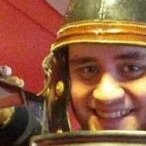
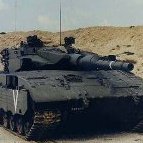
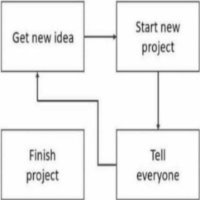
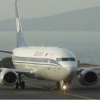
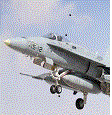
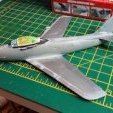

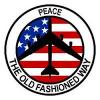


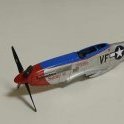

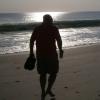
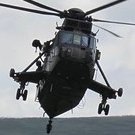
.thumb.jpg.b4a5069fd2c2dd5708ce1694345c5b11.jpg)